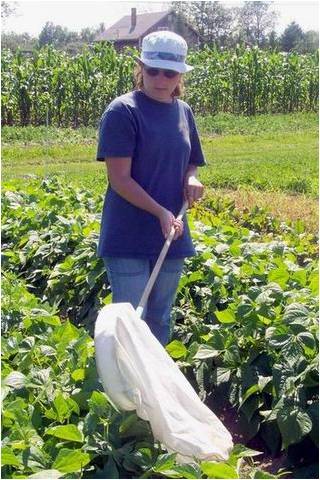 Proper pesticide use avoids harm to honey bees, their food sources, water, and habitat. Best Management Practices (BMPs) are not considered regulatory requirements (such as label directions and local ordinances), but they provide additional practical information for pesticide users, growers, beekeepers, and all of us who enjoy the “fruits” of pollination. The following BMPs apply to virtually all pest management decisions and actions. Realize that there may be other BMPs, not listed below, that are specific to certain crops and locations.
Proper pesticide use avoids harm to honey bees, their food sources, water, and habitat. Best Management Practices (BMPs) are not considered regulatory requirements (such as label directions and local ordinances), but they provide additional practical information for pesticide users, growers, beekeepers, and all of us who enjoy the “fruits” of pollination. The following BMPs apply to virtually all pest management decisions and actions. Realize that there may be other BMPs, not listed below, that are specific to certain crops and locations.
Apply pesticides only when needed…
Use an Integrated Pest Management (IPM) Approach:
- Monitor and assess pest populations to determine if levels warrant control.
- Select the best combination of pest control options that minimize risks to pollinators.
- See the IPM module for more information.
When a Pesticide is needed…
Be Alert to Bloom
The presence of bloom is the key factor in pollinator exposure to pesticides. Honey bees and other pollinators are most at risk of poisoning when bee-toxic pesticides are applied to CROPS, WEEDS*, or OTHER VEGETATION that is blooming.
*When possible, remove blossoms of weeds such as dandelion in orchard cover crops before applying bee-toxic pesticides.
Employ Residual Toxicity Safeguards
Many bee-toxic pesticides can be used on blooming crops in an appropriate “window” of time. Evening applications are generally the least harmful to honey bees, but stricter application restrictions may be necessary when a pesticide has extended residual toxicity (ERT). Pesticides that have an ERT (RT of 8 or more hours) are hazardous when that toxicity will extend into the period of bloom. Pesticides that do not have ERT, or an RT of less than 8 hours, have a more flexible application “window”…

Check the Weather
Environmental conditions affect pesticide persistence. Daytime applications at low temperatures may cause some classes of pesticides to remain toxic much longer than during warm weather. Cloud cover also may prolong toxicity due to lower levels of ultraviolet light which breaks down many pesticides. Do not apply bee-toxic pesticides with extended residual toxicity on nights when dew is forecast. Dew may re-wet pesticides and increase bee exposure.
Environmental conditions also affect bee activity. When high daytime temperatures encourage bees to begin foraging earlier or continue later than usual, adjust application times of bee-toxic pesticides accordingly. Experience shows that when bee-toxic pesticides are applied before or during cold nights, followed by warm summer days, the incidence of bee kills greatly increases.
Use the Least Hazardous Formulation
Dust and microencapsulated formulations are most hazardous to bees because they are similar in size to pollen and tend to stick to bee hairs.
Granular formulations are the least hazardous when bees are present.
Emulsifiable concentrates formulations usually are less hazardous to bees than wettable powders because the powders remain toxic in the field longer.
Minimize Drift
Honey bees will visit the blooms of crops and/or weeds near target crops and be unintentionally impacted by drift and pesticide residues. Keep the product on the intended area/crop (see the Drift module) and apply pesticides with equipment that has been calibrated for the particular application (See the Calibration module).
Provide Clean Water
Beekeepers and growers should discuss and address the need for clean drinking water for bees, particularly when the weather is warm (See Cooperate and Communicate). This should include multiple stations. Water does not have to be limited to human-made stations (for example, a river, lake, or pond, if it provides clean water, would do). Remove puddled water containing bee-toxic pesticide left by chemigation or other treatment methods. Vinegar may be added to these puddles as a bee deterrent.
Communicate with Beekeepers
Cooperation and communication among growers, applicators, beekeepers, crop advisors, and local officials greatly increase the likelihood of success in protecting pollinators and their habitats (see Cooperate and Communicate). Take the initiative to establish good relations and communication with commercial and local beekeepers. Read this communication/cooperation success story from Yuma.
Learn about Local Regulations/Programs
Check for specific local ordinances pertaining to pollinators, especially beehive locations or designated preserves (if applicable). In many farming areas, state pesticide regulatory agencies can provide information about pollinator protection. Some regions require that commercial beehive operations register the location where hives are being kept. Many states have regulations (for example, the Iowa “Pesticide/Bee Rule”) intended to reduce the hazard of insecticide applications to bees.
Resource: Tips for Commercial Agricultural Pesticide Applicators. Purdue Pesticide Programs, PPP-113, POL-3.
